
Institutional shifts: MDMC speakers talked generational trauma, keeping children safe
February 7, 2023
By
Haley Nagasaki
Speakers at the Manitoba Disaster Management Conference discussed difficult topics, and demonstrated how by turning anguish into advocacy, we can successfully work to mitigate risk and increase structure and security in the community.
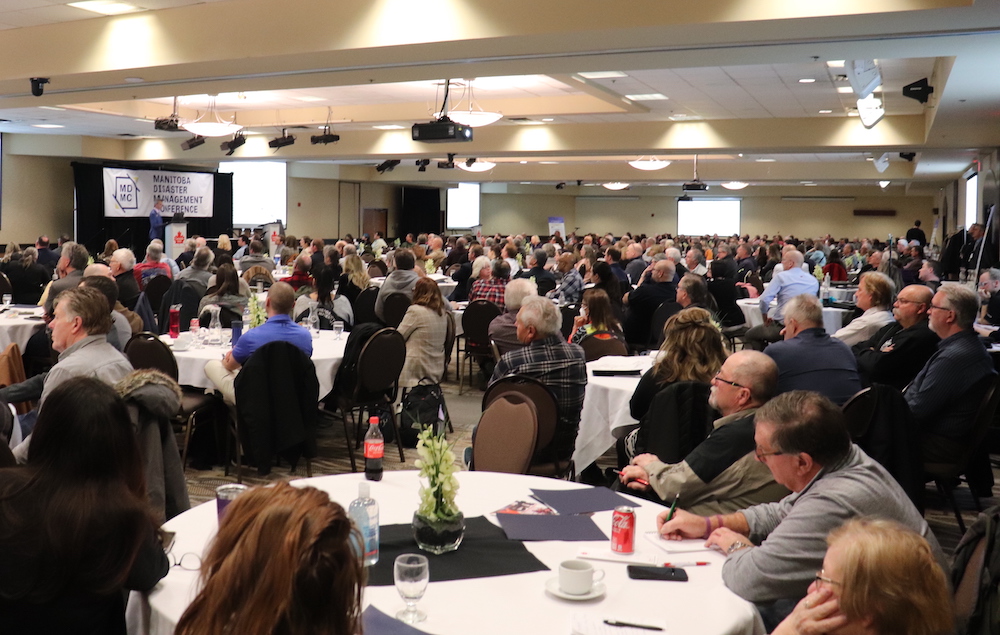 The Manitoba Disaster Management Conference drew hundreds to Winnipeg in January. Photo: Manitoba Disaster Management Conference.
The Manitoba Disaster Management Conference drew hundreds to Winnipeg in January. Photo: Manitoba Disaster Management Conference. Day 2 of the Manitoba Disaster Management Conference (MDMC) began with a workshop session sponsored by Manitoba Hydro and Napier Emergency Consulting. Shelley Napier, board chair of the MDMC executive committee, spoke in the main ballroom on “Leadership in an Emergency Event – Know Your Role Before It Happens.”
Joined by Cheryl Christian, former mayor of Rural Municipality of West St. Paul, Napier covered the difference between a plan and a program for EMOs, calling the plan, “the bricks,” and the program, “the mortar.”
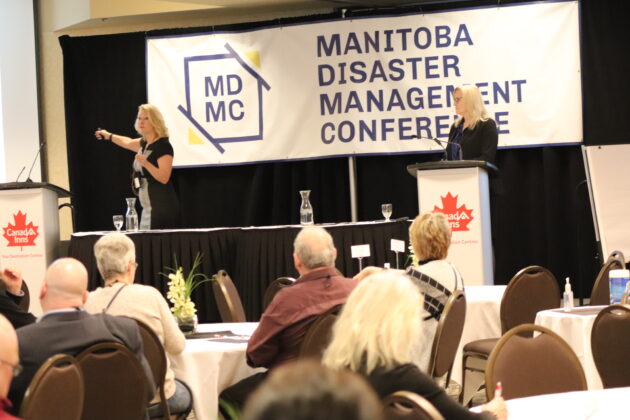
Shelley Napier and Cheryl Christian kickoff MDMC Day 2. Photo: Manitoba Disaster Management Conference.
International best practices
Within our communities, programming is all about the safety, welfare, and wellbeing of the people. It operates as the “foundational support that makes the plan succeed,” said Napier, who emphasized simplicity in terms of “user friendly and less text-heavy plans.”
More broadly, emergency programs are community plans with training exercises blended with public education. They are “an international best practice that save lives, property, and the environment,” she said.
The resilience of a community might be determined by the vulnerability of the population, i.e., the health, economic status, gender, age, and the cultural traditions and language of new Canadians, Napier cited. These factors must be considered when building programs, because “no place is immune to emergencies; they just might not have happened yet.”
Community emergencies occur when “a hazard intersects with a vulnerability,” requiring the need to react appropriately with succinct plans and programs in place. She listed possible emergencies, such as weather events (flooding, forest fires), train derailment, and power outages.
Breaking the cycle
Meanwhile, in a neighbouring breakout room, consultant Serena Lewis led her second session: “Why Grief Centred, Trauma Sensitive Approaches are Critical in the Aftermath of Disasters.” (Read our Part 1 coverage for Lewis’ first session)
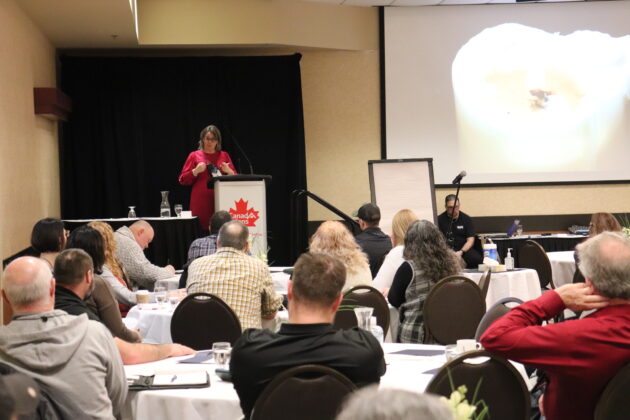
Serena Lewis discusses compassionate behaviour and communication. Photo: Manitoba Disaster Management Conference.
The uncomfortable truth of Canada’s colonial history – displacing Indigenous peoples and establishing residential schools, interning Japanese Canadians during the Second World War, and the ill treatment of elderly populations – speaks to the discrepancies of our nation’s outward façade and the deep need for collective healing.
“Canada may boast of a mosaic,” said Lewis, “but we have to work on our healing.”
Deconstructing complicated grievances and traumas on the land must be addressed, Lewis urged. The paradox is in relation to the increase of domestic violence and the worsening socio-economic status of many Canadians, in addition to adverse childhood experiences seen manifesting as health problems later in life.
“We break the cycle of intergenerational trauma when we can talk about the hard stuff,” Lewis said.
Trauma-informed and grief-aware workplaces are needed, and children who experienced trauma require access to support where they are seen, heard, and believed.
Community members require training to actively assist this institutional shift, Lewis said. For example, the language used to approach issues must be free of judgment, either implied or explicit, where those experiencing grievances should not be pushed or pulled, but allowed the space to heal.
“They do not need saving, they need to be heard and valued,” Lewis detailed, through the expert lens of her profession.
‘From anguish to advocacy’
Max Schachter, father of Alex Schachter and founder and executive director of the Safe Schools for Alex organization spoke about “A Father’s Journey to Make Schools Safer After the Parkland School Shooting.” Schachter’s son Alex was among the 17 victims murdered.
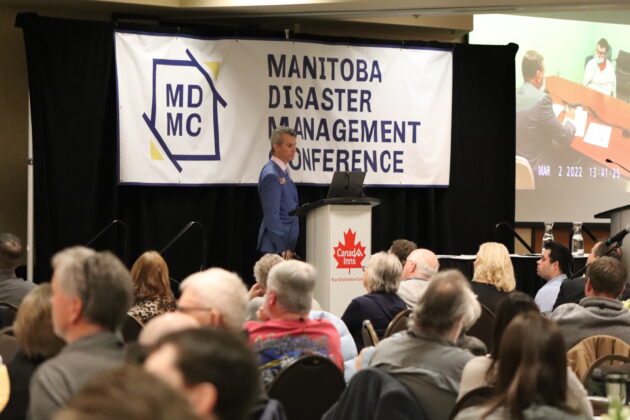
Max Shachter delivers advocacy presentation in Winnipeg. Photo: Manitoba Disaster Management Conference.
The incomprehensible tragedy of the Parkland school shooting on Feb. 14, 2018, now five years ago, was recounted in the ballroom at the MDMC.
Schachter is a national security advisory council member and through his appointment to the Marjory Stoneman Douglas High School Public Safety Commission, has helped to improve security and safety for Florida’s students. He continues his work on a national level.
Schachter advocates policy change within the U.S. government, and “works alongside members of congress, leaders of all major federal agencies, and presidents of the United States to make schools safer.” He delivers his keynote presentation across school districts, law enforcement organizations, and referral agencies in the U.S., and, for the first time, he delivered his presentation in Canada.
Schachter has helped bring new technology and applications to states and school districts to help increase connectivity, security, and response time.
Community Emergency Response Teams (CERT)
The Niagara region’s emergency management program specialist, Grant Durfey, spoke about the importance of community volunteer response and the establishment of CERT in Ontario.
In addition to his role as EM specialist, Durfey oversees and co-ordinates the volunteer response team for the purposes of preparedness, response, and recovery in the event of an emergency.
“In a disaster, you need volunteers,” he said. “Military can’t be the go-to for everything.”
In Canada, emergencies fall under the responsibility of municipalities (unlike the U.S.’s FEMA department), and so the lack of funding requires the assistance of able volunteers. However, Durfey expresses concern over “walk-on volunteers,” who appear on site at the time of an emergency.
Durfey questions the criteria of walk-on folks, including their past training and access to PPE. He questions their motives, as “disaster tourism” is a legitimate possibility. His solution is to recruit ahead of time, vetting the community response team and increasing structure during a crisis.
The best way to organize CERT is to start small and build upwards, he said. “It can cost as little or as much as want.” For example, in Niagara, they repurposed an ambulance as a response vehicle for less than $10,000.
“Be realistic with the asks of volunteers,” he encouraged – meaning not too much pressure. A handful of evening training sessions coupled with meetings twice per year will keep volunteers “interested and active.”
Possible CERT tasks include sand bagging, radio use, drivers, and crowd direction.
With the growing impacts of climate change, CERT is a realistic strategy to help alleviate some of the pressure on EMs in our municipalities.
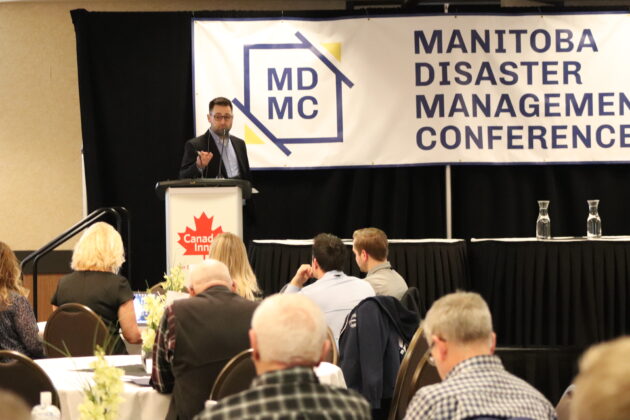
EM program specialist Grant Durfey explains CERT. Photo: Manitoba Disaster Management Conference.
The limits of ICS
Jay Shaw, assistant chief of emergency management and public information with the Winnipeg Fire Paramedic Service, spoke on Day 3 about the potential limitations of the incident command system (ICS).
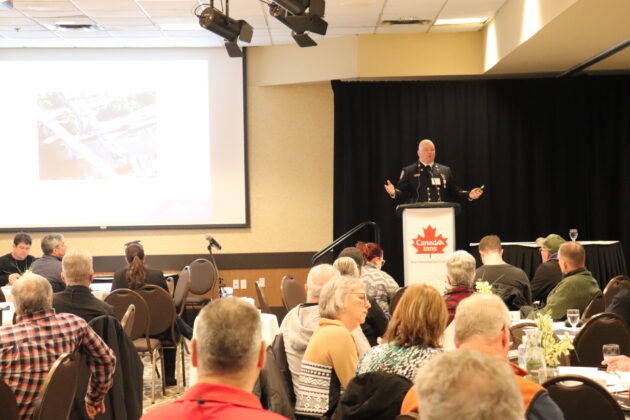
Jay Shaw closes the conference with a talk on ICS. Photo: Manitoba Disaster Management Conference.
Shaw asks whether ICS is failing emergency managers, suggesting it may not be an effective tool anymore for disasters, which was first detected around the time of Hurricane Katrina. The ICS processes may not be, “large enough to handle the complexities of the disaster we’re seeing now,” Shaw said.
And yet, on a smaller scale, such as in small rural municipalities, ICS may be too big of a tool. “So, is it too big or too small?” he asked. “Well, it depends on where it is.”
Shaw touched on the potential need for an international or offshore command structure. And, to avoid “paralysis by analysis,” he advocated segmenting departments into “political, safety, critical infrastructure, and services,” during these much larger events. On the smaller scale, he suggested a return to the “principles of leadership and management,” in our communities.
Editor’s note: This is Part 2 of Avert’s Manitoba Disaster Management Conference coverage. Read Part 1 here.
Print this page